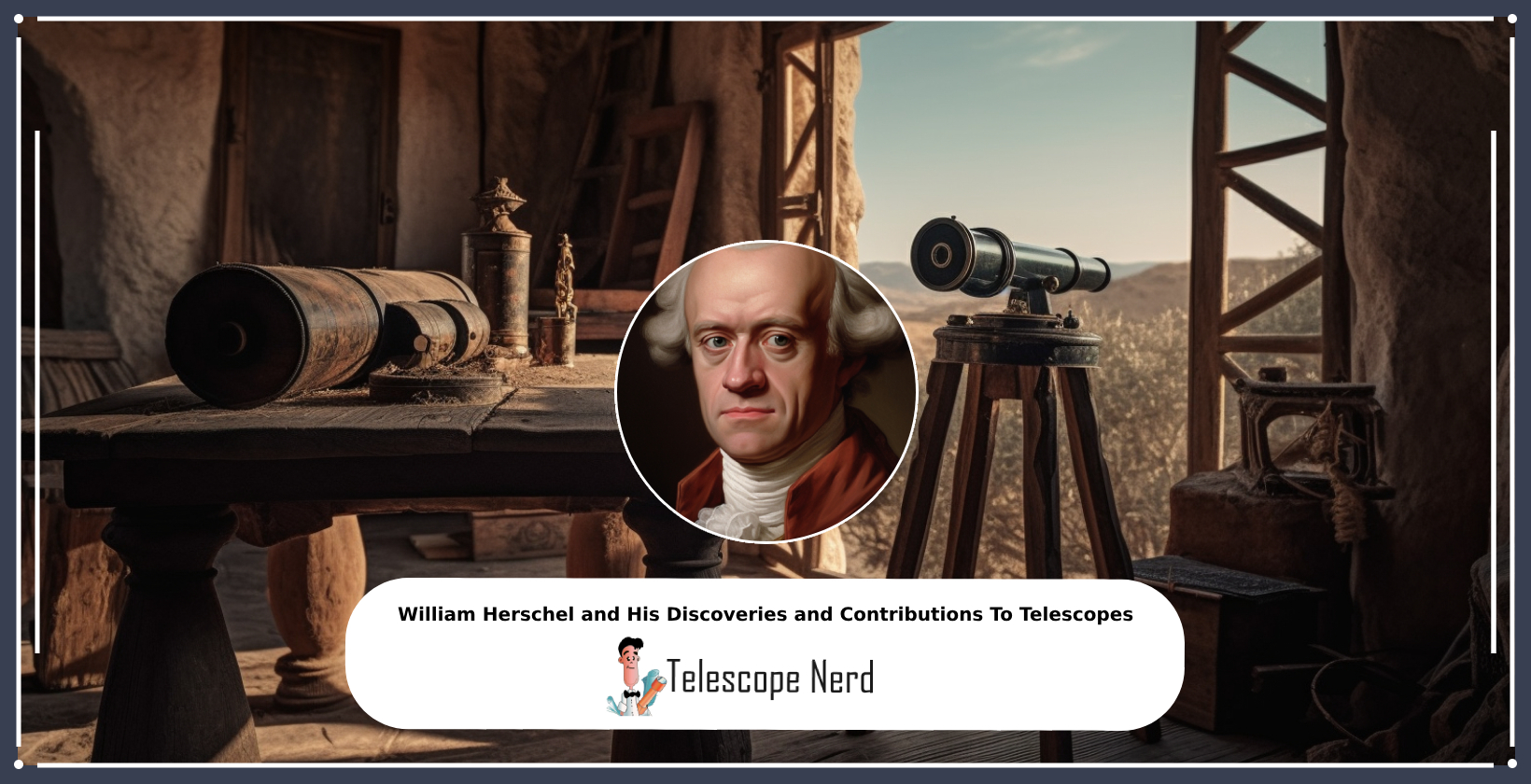William Herschel and His Discovery and Contribution To Telescopes
William Herschel was a British astronomer, telescope maker, and musician known for discovering the planet Uranus in 1781. He made significant contributions to the field of astronomy and telescope technology as an observational astronomer, telescope maker, and scientist. Herschel discovered Uranus through a combination of luck, persistence, and dedication to astronomy. He happened to be observing the sky at the right time and noticed a new object that turned out to be a planet. Herschel built his own telescopes, incorporating innovative features and large, precise optics. His most famous telescope, with a 40-foot long iron tube and a four-foot diameter mirror, was the largest and most expensive scientific instrument of its time.
Who is William Herschel?
William Herschel (1738-1822) was a British astronomer, telescope maker, and musician of German origin, who is best known for discovering the planet Uranus in 1781. He started his professional life as a musician, teaching music and playing in a band, before transitioning into astronomy. Herschel made significant contributions to the field of astronomy and telescope technology as an observational astronomer, nebulae observer, and binary star researcher. He also advanced the field as a telescope maker, pioneering the use of reflector telescopes, and as a scientist, developing theories of cosmology.
In recognition of his groundbreaking contributions, Herschel was knighted in 1816 and became a fellow of the Royal Society. His work laid the foundation for modern astronomy, and his legacy is celebrated in the William Herschel Telescope, named in his honor. He discovered Uranus and several moons around other gas giants, and also compiled a catalog of 2,500 celestial objects that is still in use today. He was a self-taught telescope maker, grinding and polishing the mirrors himself to build his first telescope at the age of 36. He hypothesized that nebulae are composed of stars and developed a theory of stellar evolution. In addition to being knighted in 1816, Herschel was also the son of a military musician and had a sister, Caroline, who worked with him in his astronomical studies.
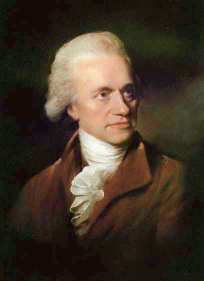
What planet did William Herschel discover?
William Herschel discovered the planet Uranus on March 13, 1781, using a telescope he built himself. At the time, Herschel was observing the stars in the constellation Gemini when he noticed a faint object that appeared to be moving slowly relative to the background stars. Initially, Herschel thought the object was a comet, but further observations and calculations by Swedish astronomer Anders Lexell and French astronomers Jean-Baptiste Saron and Pierre Laplace showed that the object’s orbital characteristics were more akin to a planet than a comet. The discovery of Uranus was significant because it doubled the known size of the solar system, as it lay twice as far from the Sun as Saturn. Herschel suggested an equatorial diameter of 34,000 miles (55,000 kilometers) for Uranus, which turned out to be impressively close to the 32,000 miles (51,500 km) diameter derived from Voyager 2 spacecraft data. Herschel wanted to name the new planet after the monarch of his adopted United Kingdom, but astronomers decided to maintain the tradition of naming planets after mythological figures.
How did William Herschel discover Uranus?
William Herschel discovered Uranus through his combination of luck, persistence, and dedication to astronomy. His discovery was partly due to luck, as he happened to be observing the sky at the right time and noticed a new object that turned out to be a planet. However, his discovery was also the result of his astronomical knowledge and experience, his exceptional observational skills, and his mastery in telescope-making skills.
William Herschel became interested in astronomy and started to build his own telescopes, refining Isaac Newton’s designs to avoid problems with poor glass optics. He cast and polished his own mirrors, producing ever bigger and better telescopes. His ability to build telescopes allowed him to create instruments that exceeded the capabilities of commercially available ones, giving him a significant advantage in his astronomical pursuits.
In 1781, while working alone, William discovered the planet Uranus. He originally named it ‘Georgium Sidus’ in honour of the British King. William spent 9 years scanning the night-sky and noting the position of the stars. One night, he worked out that one bright spot in the sky was not a star, it was a planet. He had discovered the ice giant planet Uranus. William is thought to have made more than 400 mirrors for his telescopes. His largest and most famous telescope was 12 metres long. This kind of telescope is now known as ‘Herschelian’.
In addition to his telescope-making skills, Herschel’s expertise in optics and instrument design enabled him to incorporate innovative features into his telescopes, such as the use of specula metal mirrors, which greatly improved their performance. Herschel’s telescopes were among the most powerful of their time.
Did William Herschel build his own telescopes?
William Herschel possessed a unique combination of attributes that enabled him to build his own telescopes. After reading books on optics and astronomy, Herschel took lessons from a local mirror-builder and started building his own reflecting telescopes. He spent up to 16 hours a day grinding and polishing the speculum metal primary mirrors for his telescopes. He had a background in music and mathematics, which gave him a strong foundation in the principles of science and engineering. Later in life, he developed a passion for astronomy and dedicated himself to the study of the stars. Herschel relied on the assistance of his family members, particularly his sister Caroline and his brother Alexander, in building his telescopes. He finished building his first telescope when he was 36 years old. Herschel had access to quality glass and metal, which were essential for the construction of telescopes with large, precise optics. As a skilled craftsman, he was able to transform these raw materials into finely crafted instruments that surpassed the capabilities of commercially available telescopes of the time. Herschel’s ability to build his own telescopes was also a product of his dedication and perseverance. He spent countless hours in his workshop, honing his skills and perfecting his designs. His commitment to excellence allowed him to overcome the many challenges inherent in telescope construction and produce instruments of exceptional quality and performance. But perhaps the most important attribute that enabled Herschel to build his own telescopes was his scientific curiosity. He approached telescope design and construction with an open mind, constantly seeking new ways to improve their performance and expand their capabilities. His innovative thinking and willingness to challenge conventional wisdom were key factors in his success as a telescope maker.
What type of telescope did William Herschel design?
William Herschel designed a telescope with a 40-foot long iron tube and a four-foot diameter mirror made of speculum, an alloy of copper and tin. The telescope was mounted on a fully rotatable alt-azimuth mount, allowing it to be pointed to any altitude in the heavens and rotate in azimuth. The telescope was constructed between 1785 and 1789 in Slough, with components made in Clay Hall near Windsor. The telescope’s design allowed it to move a few degrees in a sideways (azimuth) direction without requiring the base to rotate, enabling Herschel to track an interesting object for short periods of time as the Earth’s rotation took it out of his field of view. The large aperture of the telescope’s design allowed for greater light-gathering power, which improved clarity when observing faint celestial objects. The telescope was significantly larger than any previous telescope, making it the largest and most expensive scientific instrument of its time. The telescope’s construction was funded by King George III, who granted £4,000 for it to be made and £200 a year for its maintenance.
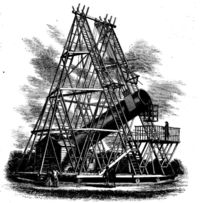
Books By and about William Herschel
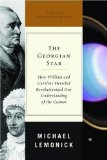
The Georgian Star: How William and Caroline Herschel Revolutionized Our Understanding of the Cosmos (Great Discoveries)

Sir William Herschel His Life and Works – This scarce antiquarian book is included in our special Legacy Reprint Series. In the interest of creating a more extensive selection of rare historical book reprints, we have chosen to reproduce this title even though it may possibly have occasional imperfections such as missing and blurred pages, missing text, poor pictures, markings, dark backgrounds and other reproduction issues beyond our control. Because this work is culturally important, we have made it available as a part of our commitment to protecting, preserving and promoting the world’s literature.
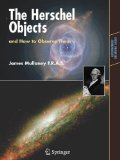
The Herschel Objects and How to Observe Them (Astronomers’ Observing Guides) – Amateur astronomers – particularly deep-sky observers – are always on the lookout for new observing challenges. The Herschel Objects, and How to Observe Them offers the exciting opportunity of retracing the steps of the greatest visual observer and celestial explorer that ever lived. This is a practical guide to seeing the most impressive of Herschel’s star clusters, nebulae and galaxies.

